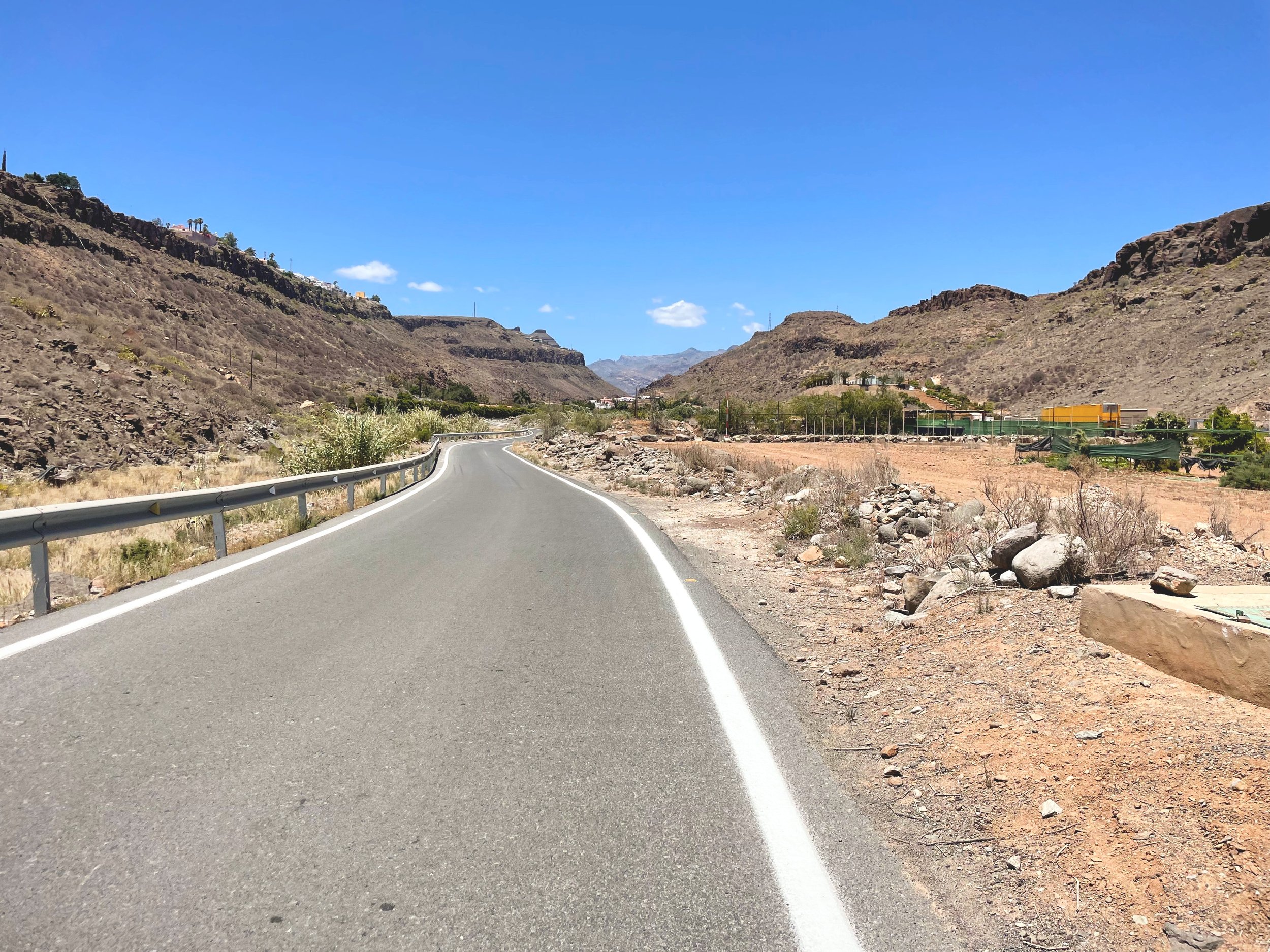Gran Canaria Ayagaures
I owe this one to Rich Siegal; without him, I would've not ventured to the islands.
I never thought I'd get to visit the Canary Archipelago, a Spanish autonomies community a stone's throw away from the coast of Africa, Morocco to be exact. The archipelago consists of 8 main islands, and today's post took place on the magical island of Gran Canaria. My first of two stops on this trip.
This was an unplanned and somewhat chaotic trip, with no one to blame except myself. I'll explain in a bit. You see, I'm still dealing with some things that weigh heavy on my mind and shoulders; dealing with those things pushed me off track. The sense of freedom and adventure I developed in Portland, where nothing was off-limits, started dwindling and fading.
Fast-forward months past the point when the hammer came down, I found myself numb to many things that made me feel alive. Thankfully though, I managed to find a healing space in Spain. The months I spent in Xativa gradually reintroduced vibrance to my life, similar to the levels of the Pacific Northwest. That made me snap out of the funk I was in and get out of the comfort zone I fell back into.
Now how is this related to the trip? Well, that happened in the same week. I realized I was in a comfort zone, so I started looking for an exit. It so happens that Rich was in Valencia at that time, and we were talking about bucket-list rides. I mentioned the Canary Islands, and he said something along the lines of "Abe, you don't want to miss out on that."
Sure enough, I found a cheap ticket to Gran Canaria and booked it. The flight was for the following morning. I did all the research I could in less than half a day, which is never enough. I decided not to take my bike with me, which I'm glad I didn't. It would've been a logistical nightmare on a trip so spontaneous. Plus, it ended up being a bit cheaper that way.
I packed up what I needed, Planned out a few routes, and then got a few hours of sleep before my flight at 6 am. My cousin Bader offered to drive me to the airport, and that's pretty much how it went down.
It only hit me when I boarded the plane that I was going to the Canary Islands! Part of me was frightened by the lack of planning and spontaneity. The rest of me was alive and missed that rush of going with the flow.
An oxymoron, perhaps? But I hope you got the point.
I decided to stay in Maspalomas in Gran Canaria. Rich, however, recommended I stay in Puerto de Mogán. However, a landslide destroyed the coastal roadway, effectively blocking riders from continuing to Puerto de Mogán from the rest of the coastal towns.
I arrived at Maspalomas and quickly realized that I perhaps had made a mistake. But I'm actually thankful I did. Otherwise, I wouldn't have met so many amazing people because of it. So everything happened for a purpose, I guess.
Maspalomas was too touristy and party-centric, at least in the area I stayed in, Playa del Inglés. Again, no one to blame but myself here. I decided to set foot and explore the area a bit before picking up my rental bike from a local store. That walk confirmed that Maspalomas indeed wasn't for me. It wasn't "bad.", just not my scene. (As you'll read in future posts, I came to love the area thanks to the locals)
I spoke with Maxi, the front desk attendant, "it's really touristy here, huh?" he looked at me like I was being sarcastic or something. He said, "well... you're in Maspalomas..." loud and clear, Maxi, loud and clear.
Now that didn't matter as much since I came here for one reason, to bike. So I picked up my rental and went back to kit up and spin the legs after the long trip to the island. Maxi saw me with the bike and said, "you're a cyclist too!!" it turned out that Maxi is one of many local cyclists. "I'm surprised to see an Arab (tourist) cyclist here in Canaria."
Right then and there and I knew I did the right thing. The lack of planning led me to this point of meeting Maxi, and through that, I met many other locals such as Izz & Ane (I will share that story soon enough!)
That whole interaction after questioning myself for the lack of planning was a nostalgic feeling. I'm not a planner; if I was, I'd be terrible at it just because I felt more rewarded by going with the flow. That served me well and taught me to stay open and remain curious.
Bougainvillea everywhere you look.
Since I had a big ride up to the Pico de las Nieves the following day, I decided to take it easy and spin around the area. I mapped out a quick route to a tiny village called Ayagaures, high up in a narrow canyon. Riding in Gran Canaria is slightly different than the peninsula. Traffic is congested, and there are fewer low-traffic roads, and that makes sense on a small touristic island. What is similar, though, is that drivers are still respectful of cyclists. As a matter of fact, both Gran Canaria and Tenerife see a nonstop influx of cyclists year-round, thanks to their great climate and mountainous terrain.
The islands virtually have no flat areas; you are either climbing or descending, which made me immediately fall in love with them. The route to Ayagaures goes up a narrow arid canyon that brought flashbacks to some of my trips to the mountainous region of Saudi Arabia. Especially seeing Bougainvillea everywhere.
The Last Giant
This short route packs a lot of climbing and steep switchbacks where you can see the peak from the bottom. As you climb, not only does that topography change but so does the tree cover. I didn't see much natural growth down the canyon, mostly manmade green spaces. It was a desert in every sense of the word. However, when I looked up from the bottom of the canyon, I thought I saw a pine tree standing tall.
When I rolled into the small village, made of a handful of houses on a cliff's edge, I saw this sunburned info board about the history of Pine trees on the island. It made sense why that Pine tree I saw all the way from the bottom looked massive. If you look closely at the info board, you'll see a trace of a person for scale. The island was (is) home to some of the largest pine trees in the world and the most fire-resistant out of all the pine trees. I got a closer look at one the following day. The bark was much thicker and scale-like compared to the Ponderosa of Central Oregon.
Perhaps it was a form of adaptation to the volcanic nature of these islands. As a matter of fact, the archipelago is surrounded by deep water, reaching 1.2 miles (2km) at the deepest point. That volcanic nature means the islands are enormous mountains with just the tip above water, not a scientific way of saying it, but how I would envision it!
One thing that immediately caught my attention as soon as I left the city was the architecture. I saw less of the traditional Spanish architecture and more of unique design. I guess calling it Canary architecture would be accurate. What drew me to it was how the houses blend into the environment, not just esthetically but holistically.
I'm very interested in the use of what's on the land. Living on a volcano warrants that you'll have volcanic rocks, such as Basalt & Igneous (as seen in the photo above). Which gives the impression that the houses are just an extension of the earth where the house stands. Especially with native vegetation covering the place.
The road climbs up and over the ridge of Monte León with views of the Atlantic Ocean and Maspalomas. Since the roads in Gran Canaria mostly go up, I had a long drop back into the city.
This quick lunch ride was a great opener for the days I spent riding on the Islands. It is by no means an easy place to ride, and there's a reason the pros come here during winter. It's not just to escape the freezing cold of Europe but to climb up some of the longest and steepest roads known in the cycling world.
Next stop, the highest (rideable) point on Gran Canaria, Pico de las Nieves.










